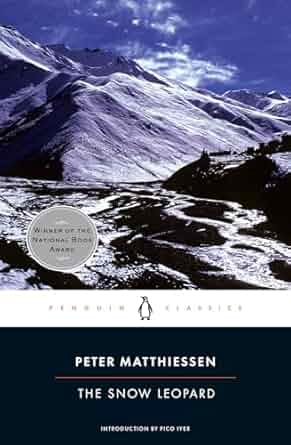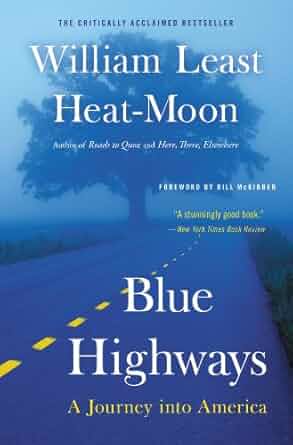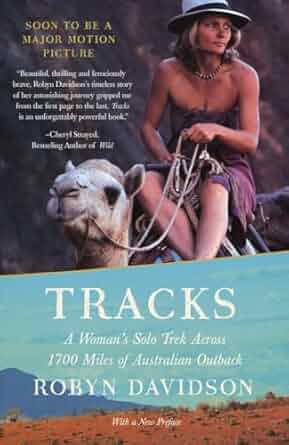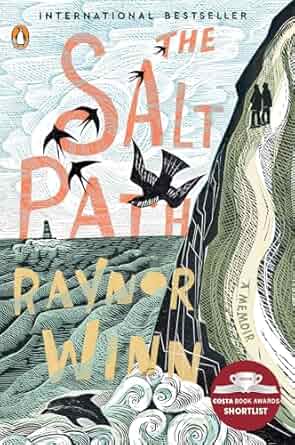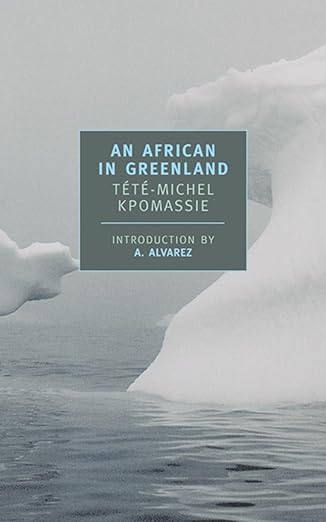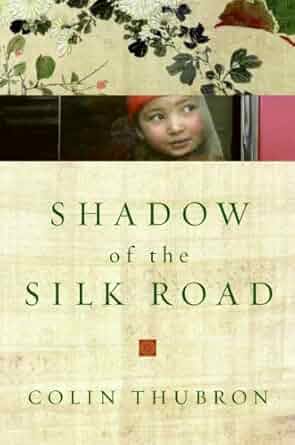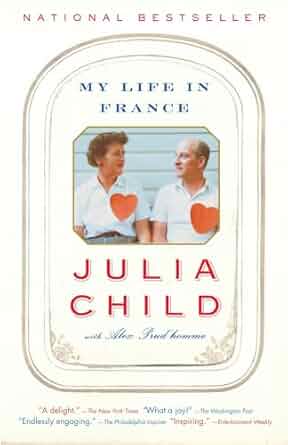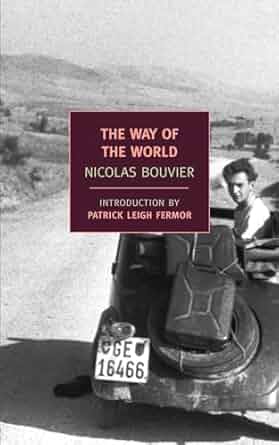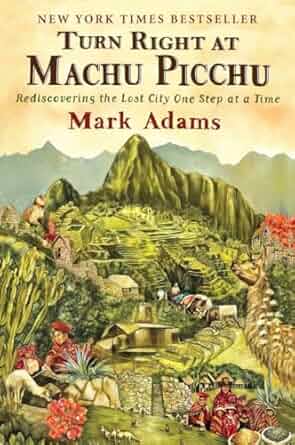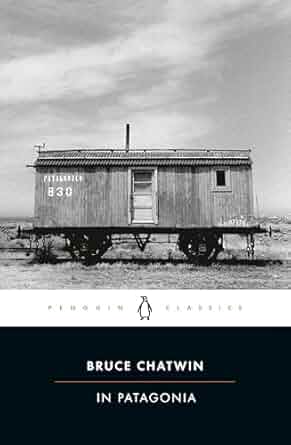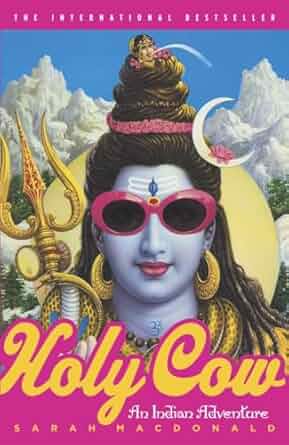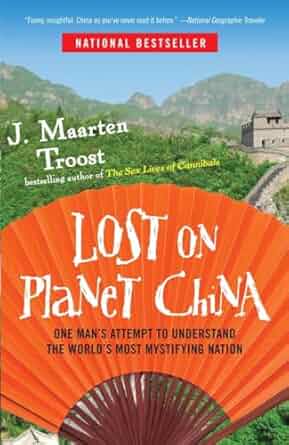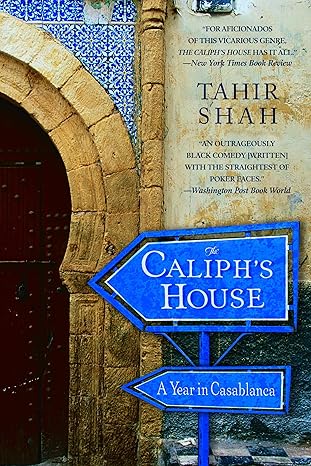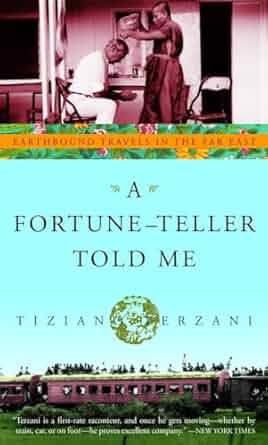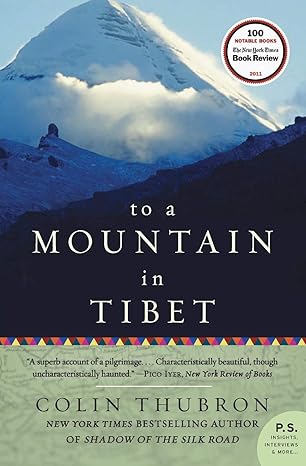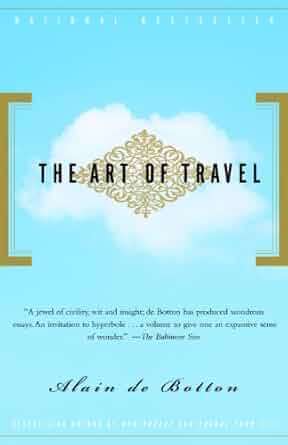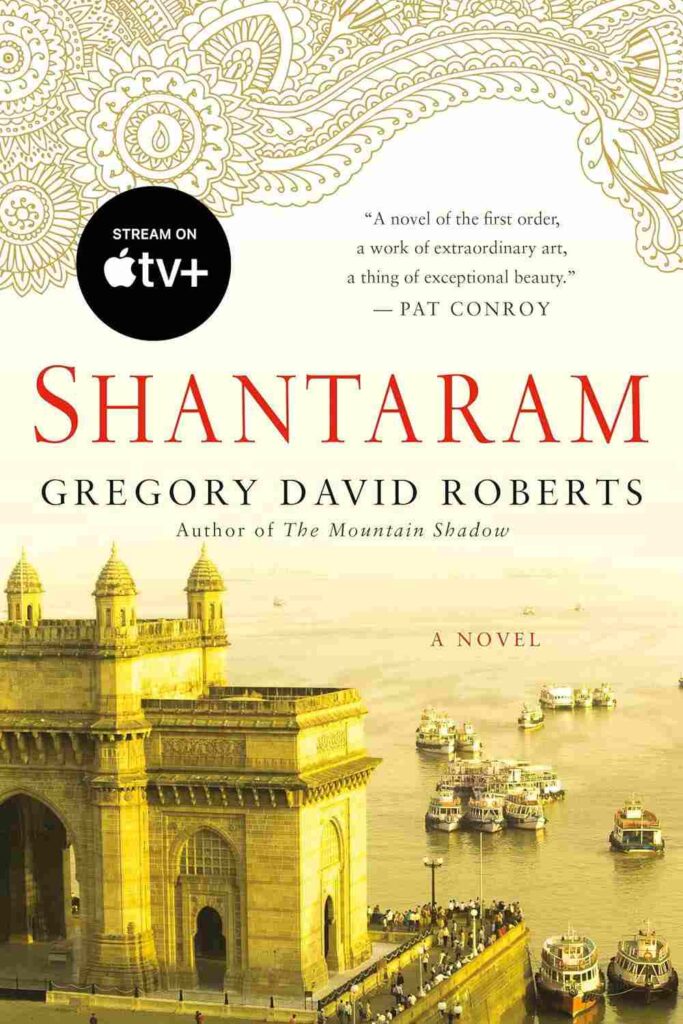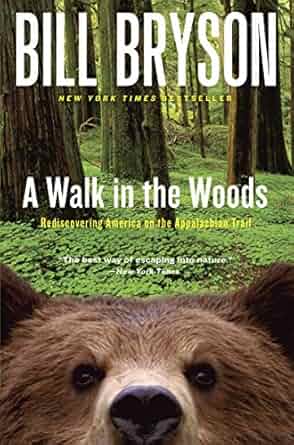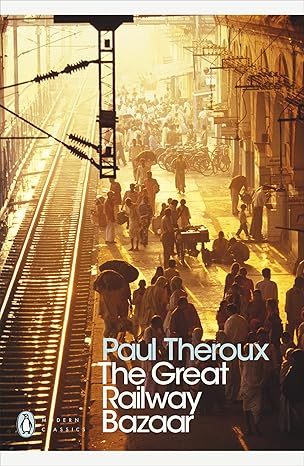Summary: In today's article, I have compiled 20 of the best travel books for adults, offering a mix of memoirs, adventures, and reflections on the transformative power of travel. My top 3 picks:
- The Snow Leopard by Peter Matthiessen
- Blue Highways by William Least Heat-Moon
- Tracks by Robyn Davidson
Travel books transport you to new places, offering glimpses of different cultures, landscapes, and personal journeys. They inspire wanderlust, broaden perspectives, and spark imagination—reminding us of the beauty and diversity of the world, all from the comfort of home.
TOP 20: Best Books About Travel
- The Snow Leopard by Peter Matthiessen
- Blue Highways by William Least Heat-Moon
- Tracks by Robyn Davidson
- The Salt Path by Raynor Winn
- The Places In Between by Rory Stewart
- An African in Greenland by Tété-Michel Kpomassie
- Shadow of the Silk Road by Colin Thubron
- My Life in France by Julia Child and Alex Prud'homme
- The Way of the World by Nicolas Bouvier
- Turn Right at Machu Picchu by Mark Adams
- In Patagonia by Bruce Chatwin
- Holy Cow: An Indian Adventure by Sarah Macdonald
- Lost on Planet China by J. Maarten Troost
- The Caliph’s House by Tahir Shah
- A Fortune-Teller Told Me by Tiziano Terzani
- To a Mountain in Tibet by Colin Thubron
- The Art of Travel by Alain de Botton
- Shantaram by Gregory David Roberts
- A Walk in the Woods by Bill Bryson
- The Great Railway Bazaar by Paul Theroux
1. The Snow Leopard
- Author: Peter Matthiessen
- About: Chronicles Matthiessen's journey through the Himalayas in search of the elusive snow leopard, intertwining natural history with spiritual exploration.
- Style of Writing: Reflective and descriptive, blending travel narrative with philosophical musings.
- Length: Approximately 95,000 words.
- Year Written: 1978
- Emotional Impact: Profound and contemplative, leaving a lasting impression on the reader.
- Difficulty Level: Moderate, with rich vocabulary and deep themes.
- Why Read It: Offers a unique blend of adventure and introspection, providing insights into both the natural world and human spirit.
2. Blue Highways
- Author: William Least Heat-Moon
- About: Documents the author's journey along America's backroads, exploring small towns and uncovering forgotten stories.
- Style of Writing: Narrative-driven with rich descriptions and personal reflections.
- Length: Approximately 150,000 words.
- Year Written: 1982
- Emotional Impact: Evocative and nostalgic, fostering a deeper appreciation for overlooked places.
- Difficulty Level: Moderate, with detailed prose and cultural references.
- Why Read It: Encourages exploration beyond the beaten path and offers a nuanced portrait of American life.
3. Tracks
- Author: Robyn Davidson
- About: Recounts Davidson's solo trek across 1,700 miles of Australian desert with four camels and a dog.
- Style of Writing: Honest and immersive, capturing the challenges and triumphs of the journey.
- Length: Approximately 85,000 words.
- Year Written: 1980
- Emotional Impact: Inspiring and introspective, highlighting themes of solitude and self-discovery.
- Difficulty Level: Moderate, with vivid descriptions and emotional depth.
- Why Read It: Demonstrates the resilience of the human spirit and the transformative power of solitary travel.
4. The Salt Path
- Author: Raynor Winn
- About: After losing their home and receiving a terminal diagnosis, Winn and her husband embark on a 630-mile walk along England's South West Coast Path.
- Style of Writing: Heartfelt and poignant, blending memoir with nature writing.
- Length: Approximately 90,000 words.
- Year Written: 2018
- Emotional Impact: Deeply moving, illustrating resilience in the face of adversity.
- Difficulty Level: Accessible, with clear prose and relatable themes.
- Why Read It: Offers a testament to the healing power of nature and the strength of the human spirit.
5. The Places In Between
- Author: Rory Stewart
- About: Details Stewart's walk across Afghanistan in 2002, providing insights into the country's culture and history.
- Style of Writing: Observational and informative, with a focus on cultural encounters.
- Length: Approximately 100,000 words.
- Year Written: 2004
- Emotional Impact: Thought-provoking, fostering a deeper understanding of Afghanistan.
- Difficulty Level: Moderate, with detailed accounts and historical context.
- Why Read It: Provides a rare, ground-level perspective of a country often misunderstood.
6. An African in Greenland
- Author: Tété-Michel Kpomassie
- About: Narrates Kpomassie's journey from Togo to Greenland, fulfilling a childhood dream and bridging two vastly different cultures.
- Style of Writing: Engaging and insightful, with vivid cultural observations.
- Length: Approximately 120,000 words.
- Year Written: 1981
- Emotional Impact: Enlightening, showcasing the universality of human curiosity and connection.
- Difficulty Level: Moderate, with rich cultural details.
- Why Read It: Highlights the transformative power of travel and cross-cultural exchange.
7. Shadow of the Silk Road
- Author: Colin Thubron
- About: Thubron retraces the ancient Silk Road, traveling from China to the Mediterranean, delving into history, culture, and the lives of those he meets.
- Style of Writing: Lyrical and erudite, blending historical context with personal reflections.
- Length: Approximately 130,000 words.
- Year Written: 2006
- Emotional Impact: Thought-provoking, offering a deep appreciation for the interconnectedness of cultures.
- Difficulty Level: Moderate, with a richly detailed narrative.
- Why Read It: Provides a captivating exploration of one of history’s most iconic trade routes.
8. My Life in France
- Author: Julia Child and Alex Prud'homme
- About: A memoir of Julia Child's time in France, chronicling her culinary journey and love for French culture.
- Style of Writing: Warm and conversational, with vivid anecdotes and humor.
- Length: Approximately 100,000 words.
- Year Written: 2006
- Emotional Impact: Delightful and inspiring, celebrating passion and perseverance.
- Difficulty Level: Easy, with accessible language and engaging storytelling.
- Why Read It: A celebration of food, culture, and the joy of pursuing what you love.
9. The Way of the World
- Author: Nicolas Bouvier
- About: Chronicles Bouvier's journey from Switzerland to Afghanistan in the 1950s, capturing the beauty and challenges of travel.
- Style of Writing: Poetic and introspective, with detailed descriptions.
- Length: Approximately 120,000 words.
- Year Written: 1963
- Emotional Impact: Profound and evocative, leaving readers reflective.
- Difficulty Level: Moderate, with literary depth.
- Why Read It: A timeless classic that captures the transformative power of travel.
10. Turn Right at Machu Picchu
- Author: Mark Adams
- About: A modern-day exploration of Peru's Inca Trail, retracing the steps of Hiram Bingham, who brought Machu Picchu to global attention.
- Style of Writing: Humorous and engaging, blending history with personal adventure.
- Length: Approximately 95,000 words.
- Year Written: 2011
- Emotional Impact: Entertaining and enlightening, sparking curiosity about ancient civilizations.
- Difficulty Level: Easy, with a lighthearted tone.
- Why Read It: Combines humor, history, and adventure in an accessible format.
11. In Patagonia
- Author: Bruce Chatwin
- About: A journey through Patagonia, capturing its rugged landscapes and intriguing local stories.
- Style of Writing: Sparse and evocative, focusing on atmosphere and character.
- Length: Approximately 70,000 words.
- Year Written: 1977
- Emotional Impact: Haunting and memorable, with vivid imagery.
- Difficulty Level: Moderate, with a distinctive narrative style.
- Why Read It: A groundbreaking travelogue that redefined the genre.
12. Holy Cow: An Indian Adventure
- Author: Sarah Macdonald
- About: Macdonald’s humorous and eye-opening journey through India, exploring its diverse cultures and spiritual traditions.
- Style of Writing: Funny and candid, with sharp cultural observations.
- Length: Approximately 85,000 words.
- Year Written: 2002
- Emotional Impact: Entertaining and insightful, offering a fresh perspective on India.
- Difficulty Level: Easy, with a relatable and humorous tone.
- Why Read It: A lighthearted yet insightful look at one of the world’s most vibrant countries.
13. Lost on Planet China
- Author: J. Maarten Troost
- About: A humorous exploration of modern China, delving into its contradictions and complexities.
- Style of Writing: Witty and engaging, with personal anecdotes.
- Length: Approximately 95,000 words.
- Year Written: 2008
- Emotional Impact: Funny and thought-provoking, balancing humor with cultural insight.
- Difficulty Level: Easy, with a conversational style.
- Why Read It: A humorous and informative take on navigating the chaos and charm of China.
14. The Caliph’s House
- Author: Tahir Shah
- About: Shah’s experiences renovating a crumbling house in Casablanca, navigating Moroccan culture and traditions.
- Style of Writing: Engaging and descriptive, with humorous moments.
- Length: Approximately 120,000 words.
- Year Written: 2006
- Emotional Impact: Entertaining and immersive, with a sense of wonder.
- Difficulty Level: Moderate, with cultural nuances.
- Why Read It: Offers a captivating look at life in Morocco and the joys and challenges of cultural adaptation.
15. A Fortune-Teller Told Me
- Author: Tiziano Terzani
- About: After a fortune-teller warns him not to fly, Terzani travels through Asia using only land and sea, exploring its ancient traditions.
- Style of Writing: Reflective and richly detailed, blending travel with philosophy.
- Length: Approximately 140,000 words.
- Year Written: 1995
- Emotional Impact: Intriguing and thought-provoking, leaving a lasting impression.
- Difficulty Level: Moderate, with deep cultural insights.
- Why Read It: Combines travel, spirituality, and fate in a fascinating journey.
16. To a Mountain in Tibet
- Author: Colin Thubron
- About: Thubron’s pilgrimage to Mount Kailash, a sacred site in Tibet, reflecting on loss, spirituality, and the journey itself.
- Style of Writing: Meditative and poetic, with rich cultural and historical insights.
- Length: Approximately 70,000 words.
- Year Written: 2011
- Emotional Impact: Deeply moving, offering profound reflections on life and spirituality.
- Difficulty Level: Moderate, with introspective themes.
- Why Read It: Combines travel with a deeply personal exploration of grief and faith.
17. The Art of Travel
- Author: Alain de Botton
- About: A philosophical exploration of why and how we travel, examining its emotional and intellectual impact.
- Style of Writing: Thoughtful and reflective, blending narrative with philosophy.
- Length: Approximately 65,000 words.
- Year Written: 2002
- Emotional Impact: Inspiring and introspective, encouraging readers to rethink the purpose of travel.
- Difficulty Level: Moderate, with philosophical undertones.
- Why Read It: Offers a unique lens on the deeper meaning and purpose of travel.
18. Shantaram
- Author: Gregory David Roberts
- About: A sweeping novel based on the author’s experiences in Bombay, blending adventure, love, and crime.
- Style of Writing: Lush and immersive, with vivid storytelling.
- Length: Approximately 400,000 words.
- Year Written: 2003
- Emotional Impact: Powerful and gripping, leaving a lasting impression through its rich narrative.
- Difficulty Level: Moderate to challenging, with detailed prose and complex themes.
- Why Read It: A vivid portrayal of India and a deeply human story of redemption.
19. A Walk in the Woods
- Author: Bill Bryson
- About: A humorous account of Bryson’s attempt to hike the Appalachian Trail, blending personal anecdotes with trail history.
- Style of Writing: Light-hearted and witty, with informative asides.
- Length: Approximately 100,000 words.
- Year Written: 1998
- Emotional Impact: Entertaining and relatable, sparking curiosity about the natural world.
- Difficulty Level: Easy, with accessible language and humor.
- Why Read It: Combines humor, nature, and history into a highly enjoyable read.
20. The Great Railway Bazaar
- Author: Paul Theroux
- About: Theroux’s journey across Europe and Asia by train, capturing the essence of the places and people he encounters.
- Style of Writing: Observational and insightful, with dry humor.
- Length: Approximately 110,000 words.
- Year Written: 1975
- Emotional Impact: Captivating and memorable, highlighting the romance of rail travel.
- Difficulty Level: Moderate, with descriptive and layered prose.
- Why Read It: A classic travelogue that celebrates the adventure of train journeys.
Conclusion
Travel books have a way of taking us on unforgettable journeys, and a few, in my opinion, stand out as truly transformative. The Snow Leopard, Blue Highways, and Tracks are timeless classics that go beyond adventure to explore themes of resilience, self-discovery, and our connection to the world. These stories don’t just transport you to breathtaking landscapes—they offer powerful insights into the human spirit. I think anyone who loves to explore, whether through reading or real-life adventures, will find these books inspiring, thought-provoking, and deeply rewarding.

